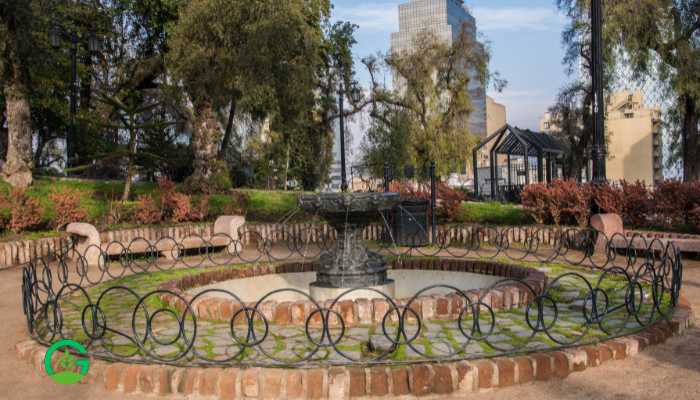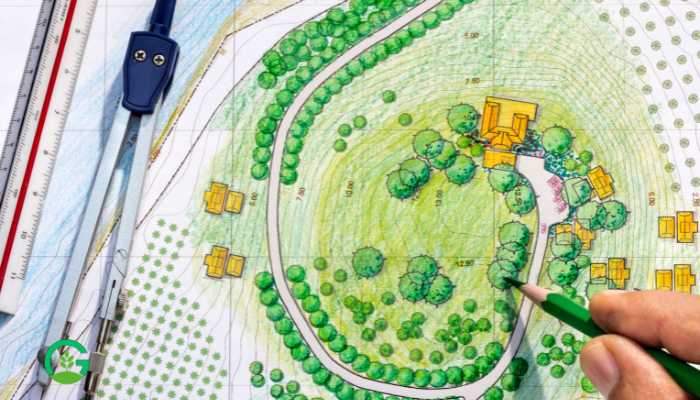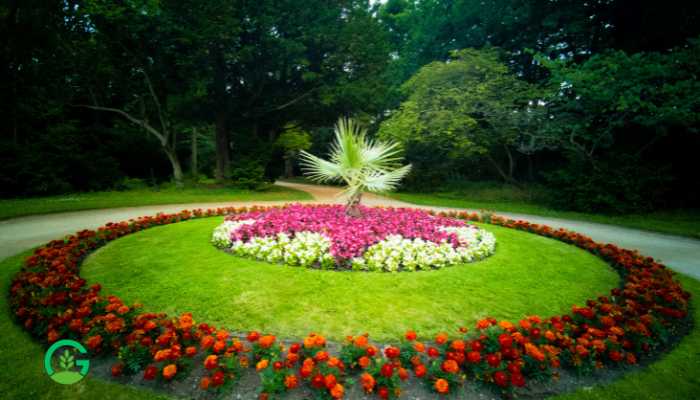Gardening can be a rewarding and creative pastime. For those who want to make their outdoor space unique and aesthetically pleasing, circular garden designs offer a great option. Circular gardens provide a sense of harmony and unity, making your garden a calm and attractive space.
In this article, we will explore various circular garden design ideas to help you create a stunning landscape.
Circular Garden Design Table of Contents
Introduction to Circular Garden Design
Circular garden designs are inspired by the natural shapes found in nature, like the sun and the moon. They create a focal point that draws the eye and can make your garden appear larger and more dynamic. Whether you have a small urban garden or a sprawling backyard, circular designs can be adapted to fit any space.
Benefits of Circular Garden Designs
Circular gardens offer numerous benefits. The symmetry and balance of a circular layout can create a calming and peaceful environment. The circular shape also makes it easier to design and maintain, as it provides a natural flow and structure.
- Visual Appeal: Circles naturally draw the eye and can make your garden the focal point of your outdoor space.
- Efficient Use of Space: Circular designs can maximize the use of space, making even small gardens appear larger.
- Ease of Maintenance: The symmetry of a circular garden makes it easier to maintain, as it naturally divides the space into manageable sections.

Planning Your Circular Garden
Planning is crucial when it comes to designing a circular garden. Start by measuring your space and sketching a rough layout. Consider the size and shape of your garden, and how you want to use it. Do you want a relaxing retreat, a place to grow vegetables, or a vibrant flower garden?
Site Assessment
Begin with a site assessment. Observe the amount of sunlight your garden receives, the type of soil, and the existing landscape features. This will help you choose the right plants and design elements for your garden.
Sketching Your Design
Draw a rough sketch of your garden layout. Use a compass or a piece of string tied to a stake to create perfect circles. Experiment with different sizes and arrangements until you find a design that works for your space.

Choosing the Right Plants
Selecting the right plants is essential for a successful circular garden. Consider the climate, soil type, and the amount of sunlight your garden receives. Choose plants that complement each other in terms of color, texture, and height.
Perennials and Annuals
Mixing perennials and annuals can create a dynamic and ever-changing garden. Perennials will provide a steady structure, while annuals can add seasonal color and variety.
Shrubs and Trees
Incorporate shrubs and trees to add height and structure to your garden. They can serve as focal points or provide shade and privacy.
Incorporating Hardscaping Elements
Hardscaping elements like pathways, walls, and seating areas can enhance the beauty and functionality of your circular garden.
Pathways
Circular pathways can guide visitors through your garden and create a sense of journey and discovery. Use materials like gravel, brick, or stone to create durable and attractive paths.
Seating Areas
Include seating areas where you can relax and enjoy your garden. Benches, chairs, or even a hammock can provide a comfortable spot to unwind.

Circular Vegetable Gardens
Growing vegetables in a circular garden can be both practical and visually appealing. The circular layout allows for efficient use of space and easy access to all plants.
Companion Planting
Use companion planting to maximize the health and yield of your vegetable garden. Pair plants that benefit each other, such as tomatoes and basil or carrots and onions.
Raised Beds
Consider using raised beds for your circular vegetable garden. They improve drainage, reduce soil compaction, and make it easier to manage your plants.
Circular Flower Beds
Flower beds arranged in a circular design can create stunning visual effects. Mix different types of flowers to create a vibrant and colorful garden.
Color Schemes
Choose a color scheme that complements your overall garden design. You can opt for a monochromatic theme, or mix and match different colors for a more eclectic look.
Layering Plants
Layer your plants by height, with taller plants in the center and shorter plants around the edges. This creates a pleasing visual effect and ensures all plants receive adequate sunlight.

Water Features in Circular Gardens
Adding a water feature can enhance the tranquility and beauty of your circular garden.
Fountains and Ponds
Consider installing a small fountain or pond as a focal point. The sound of running water can create a soothing ambiance and attract wildlife to your garden.
Maintenance
Ensure your water feature is easy to maintain. Regular cleaning and water treatment will keep it looking its best.
Using Circular Paths and Walkways
Circular paths and walkways can add structure and flow to your garden. They can connect different areas of your garden and create a sense of movement.
Material Choices
Choose materials that complement your garden design. Gravel, stone, and brick are popular choices for pathways.
Design Ideas
Experiment with different patterns and layouts for your paths. A spiraling path can create a sense of journey, while a series of concentric circles can add a touch of elegance.
Creating Focal Points
Focal points are essential in a circular garden. They draw the eye and create interest.
Sculptures and Art
Add sculptures or garden art as focal points. They can add personality and a unique touch to your garden.
Plants as Focal Points
Use striking plants as focal points. A large tree, a colorful shrub, or a cluster of vibrant flowers can serve as the centerpiece of your garden.
Image | Product Name | Review | Price |
Circular Herb Gardens
Herb gardens are a great addition to any garden. A circular herb garden can be both functional and beautiful.
Designing Your Herb Garden
Arrange your herbs in a circular pattern, with taller herbs in the center and shorter ones around the edges. This makes it easy to access all your herbs.
Popular Herbs to Grow
Consider growing herbs like basil, rosemary, thyme, and mint. They are easy to grow and can be used in a variety of culinary dishes.
Lighting for Circular Gardens
Proper lighting can enhance the beauty and safety of your circular garden.
Solar Lights
Solar lights are an eco-friendly option for garden lighting. They are easy to install and can create a soft, ambient glow.
Spotlights and Path Lights
Use spotlights to highlight focal points and path lights to illuminate walkways. This ensures your garden can be enjoyed even after the sun goes down.
Seasonal Care and Maintenance
Maintaining your circular garden requires seasonal care.
Spring and Summer
In spring and summer, focus on planting, watering, and weeding. Deadhead flowers to encourage new blooms and prune shrubs to maintain their shape.
Fall and Winter
In fall and winter, prepare your garden for the colder months. Clean up fallen leaves, mulch your plants, and protect sensitive plants from frost.
Read More
Sustainable Practices in Circular Gardens
Incorporate sustainable practices to make your garden more eco-friendly.
Composting
Composting is a great way to recycle garden waste and enrich your soil. Set up a compost bin in a convenient location and add kitchen scraps and garden clippings.
Water Conservation
Use drip irrigation or soaker hoses to conserve water. Mulching your plants can also help retain moisture in the soil.

Circular Garden Design Ideas Conclusion
Circular garden designs offer a unique and visually appealing way to enhance your outdoor space. Whether you’re growing vegetables, flowers, or herbs, a circular layout can create a sense of harmony and balance. With careful planning and thoughtful design, you can create a stunning garden that provides beauty and tranquility all year round.
Circular Garden Design Ideas FAQ
What are the benefits of a circular garden design?
Circular garden designs create a sense of harmony and balance, maximize space, and are visually appealing. They can make even small gardens appear larger and more dynamic.
How do I start planning my circular garden?
Start by assessing your site, measuring your space, and sketching a rough layout. Consider the size and shape of your garden and how you want to use it.
What types of plants are best for circular gardens?
Choose plants that complement each other in terms of color, texture, and height. Mix perennials and annuals, and consider incorporating shrubs and trees for height and structure.
How can I incorporate hardscaping elements into my circular garden?
Include pathways, walls, and seating areas to enhance the beauty and functionality of your garden. Use materials like gravel, brick, or stone for durability and attractiveness.
What sustainable practices can I use in my circular garden?
Incorporate composting and water conservation techniques. Use drip irrigation or soaker hoses, and mulch your plants to retain moisture and reduce water usage.





















2 thoughts on “Best Circular Garden Design Ideas”